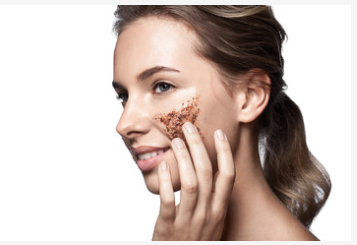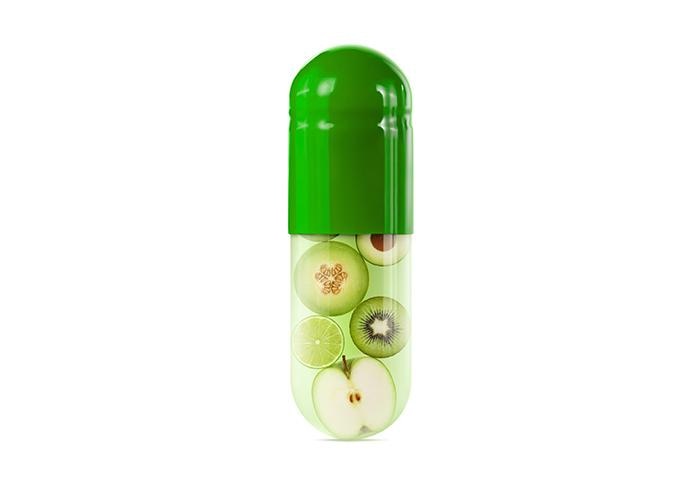Pure Indulgence Beauty Therapy
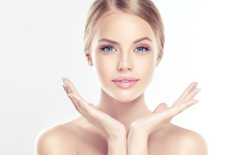 IPL is a light-based treatment (even though it’s often grouped into the laser category) that is used to erase discoloration — think freckles, sun damage and brown spots—as well as rosacea, acne, broken capillaries and unwanted hair. Current IPL systems are very versatile, allowing us to cover a lot of the skin's surface while treating a variety of skin conditions. It's often the modility of choice when dealing with pigmentation issues because it targets melanin in the skin. Melanin increases from chronic sun exposure, as do the freckles that result from it. With just a few treatments of IPL, dark spots can improve dramatically. The treatment is able to cover a large area and there is little downtime associated with it. Each session, feels like a warm bright light on the surface of the skin, similar to a bright flash being fired. A few days post treatment, the treated areas become darker (like a coffee grind) before they naturally fall off and fade. After about two to three treatments, the results will be noticeable, but many client notice a difference after the first treatment. Because IPL relies on the power of a broadband light source plus filters, different molecules in the skin can be focused on to selectively treat a specific target with minimal impact on other skin structures. That’s why it works best on benign pigmented skin lesions. In addition to all the benefits that IPL offers—did we mention it also stimulates collagen production—it can be used to rejuvenate the skin from a textural standpoint, too. We’ve seen that IPL clients skin look younger and tighter after treatment. IPL is also suitable for treatment for Hair Removal, Skin Rejuvenation and to treat facial veins on the face. A consultaion is a required before any IPL service and be performed - just to ensure that it is the right treatment option for you. To view more information about IPL, click here.  While we are young, our skin has a beautifully even skin tone. It looks even in color and has a radiant appearance. As we get older, however, we notice the skin is no longer as clear and even toned, the pigments in our skin are deposited less evenly causing freckles, brown spots, stains and brown marks. These color irregularities are called pigmentation. Where the skin is blotchy with too much pigment, this is called hyper-pigmentation (excessive pigment), cholasma or melasma. WHAT CAUSES BROWN SPOTS? Hyper-pigmentation is caused mainly by UV exposure, hormones, friction, heat, and inflammation. Excess sun exposure, certain hormones (e.g. during pregnancy), too much rubbing (e.g. underarms) heat and inflammation, for example after an acne breakout, are known to cause the skin to trigger more melanin. This is a defense response by the skin. When exposed to these triggers, the skin will thicken and darken to protect itself from further damage. The pigment melanin, which gives our skin the brown color, protects the skin by absorbing UV radiation and preventing burning damage to the skin. This is why people with lighter skin and less melanin burn faster than people with darker skin types and more melanin in their skin. Friction such as excessive rubbing will also trigger the skin to produce and hold onto more dead cells, causing thickening of the skin. In this way, the skin is trying to protect the live skin cells deeper in the skin from damage. The thickening and pigmentation, however, cause the skin to appear patchy, dull and aged. HOW TO PREVENT HYPER-PIGMENTATIONWEAR A BROAD SPECTRUM: SUNSCREEN MINIMUM SPF 30+ Whatever the cause, where possible, first eliminate the cause of brown spots in your skin, where possible. Every single minute you are outdoors during daylight without any sun protection, you are exposing your skin to UV, which triggers melanin production. So the first preventative step you can take is to build in a quality sunscreen of at least SPF 30+ into your daily routine. Select make up with minimum SPF 15 + for added protection. Whenever outdoors, wear a hat, sunglasses with UV protection, stay in the shade whenever possible, and try to avoid direct sun exposure during the middle of the day, when the UV rating is at it’s strongest. USE A TYROSINASE INHIBITOR ON YOUR SKIN EVERY DAY Tyrosinase is the enzyme produced by our skin which triggers melanin production in response to skin damage, or hormones. Using skincare that includes ingredients to inhibit/block melanin production will help reduce brown spots and even out your skin tone. Ingredients to look out for are:
EXFOLIATE YOUR SKIN WITH AHAs Alpha Hydroxyl Acids will remove dead cell build up and surface pigmentation giving your skin an instant brightening result. Professional strength peels are an excellent way to start and fast track your results. At home, choose and use skincare in the form of cleansers, serums and night creams that contain AHAs such as lactic acid or glycolic acid to speed up cellular turnover and remove the melanin build up. Be sure, however, to use these products under the guidance of a well experienced and qualified aesthetician, because using the wrong products or overdoing it can, in fact, trigger more melanin production. Remember, too much exfoliation, will trigger inflammation which will cause the skin to go into the defensive mode by making more melanin and thickening the surface layers. Less is more, and in the case of treating pigmentation disorders, patience with really pay off. Aim to treat uneven pigmentation carefully, slowly over time, which will deliver more lasting results. WHAT TO AVOID
 During summer we come alive. Longer daylight hours and sunny warm weather is the perfect opportunity to have a picnic in the park, a stroll on the beach, potter around in the garden, play sports and go for a swim. The warmer temperatures and sun exposure can lead to oily shiny skin, sun damage, pigmentation, couperose and premature aging. Here are some tips for keeping your skin fresh and glowing during summer and protect your skin from long-term damage. MANAGING OILY SKIN Warmer temperatures and sunlight triggers skin’s natural production of oil. The oil is beneficial to help protect the skin from losing too much moisture. In New Zealand we have the extremes in temperature and strong sun which can make the skin look shiny and could lead to skin clogging, blackheads and breakouts. The first step to managing an oily skin is to balance it perfectly without stripping. Try a lighter milk cleanser for a perfectly cleansed skin. Avoid foamy gel cleansers which contain detergents that strip your skin and can trigger more oil production to make your skin oilier. To keep your skin hydrated and shine free all day long try a mattifying moisturizer. Look for a fluid consistency with added mattifying powders to give your skin a very soft, powdery and matte finish to the skin. These clever moisturizers hydrate the skin where needed and mattify the zones which are too shiny. MANAGING RED SKIN During hotter days, the skin's capillaries dilate to allow the body to cool itself down. This is why the skin turns red when it's hot. Short-term it’s not a problem, as the body cools down the capillaries go back to their normal size. Long-term exposure to the UV light however can damage the collagen and elastin in the capillary wall, causing permanent dilated capillaries called couperose. The first step to prevent this problem is to protect the skin from UV damage where possible. Wear a hat, and a sunscreen and limit the direct exposure to sun. If you find your skin tends to redden in summer or you have visible capillaries, try a serum and a moisturiser which soothes and protects delicate skin. PROTECTING FROM FREE RADICAL DAMAGE All the exposure to sun during summer can cause free radical damage in the skin. Vitamin C and vitamin A are powerful antioxidants which should be included in everybody's skin care during the summer periods and where sun damage, premature aging and pigmentation are evident. During the day, under your moisturizer try a good vitamin C serum. Look for a quality professional strength serum that contains stabilized vitamin C to even the skin tone and reduce the appearance of brown spots. Vitamin C also important in the production of collagen and elastin so will help a sun damaged and ageing skin. At night try a Retinol serum or cream. Look for a cream which is rich in vitamins and minerals and Retinol to improve skin elasticity, restore radiance, smooth superficial imperfections and reduce the appearance of wrinkles and age spots. THE ESSENTIALS OF SUNSCREEN With all that you do to look after your skin, if you do not protect it from the sun with a good sunscreen you will have that much more to cope with in the years to come. Look for a professional formula based on physical reflective agents such as zinc oxide and titanium dioxide as the main ingredients and boosted with antioxidants such as vitamin E or aloe vera for maximum protection. During summer your skin has very different needs than during the cooler periods so it is important to have your skin professionally analysed to determine how your skin is coping and what needs to be managed better for a flawless, bright skin. To discover the best natural solution for your skincare needs, book in a professional consultation with your skincare expert. Thanks to Jana Elston for this article 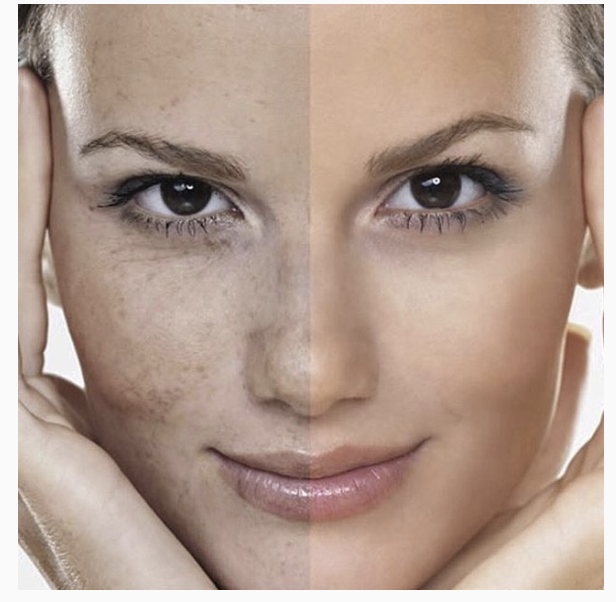 Protecting the skin from the sun should be a major concern for clients of all ages. As Skin care professionals, we need to educate you on what you can do to prevent damage before it is too late. 1. Preventing sun damage is much easier than restoring wrinkles. It is always easier to prevent than it is to reverse. Sun damage can cause wrinkles, discolored skin, and more serious health consequences AND in some cases, once the damage is done, there is no going back. 2. Avoid deep exfoliating procedures and chemical peels during the summer. These treatments make the skin more photosensitive by removing layers of the epidermis (the top layer of your skin) that can act as a protective shell. The same is true for skin care products formulated with retinol, alpha hydroxyl acids, and other lightening agents. Products containing these ingredients are best used in the evening. 3. Protect your skin with broad-spectrum sunscreen. The SPF number on the bottle indicates how much safe, sun-exposure time can be extended. Determine the time it takes for their unprotected skin to start turning red on a sunny day. Safe, sun-exposure time depends on genetic disposition, location, and the time of day (the sun is most active between 11 a.m. and 4 p.m.). For example, if your skin starts to change color after 10 minutes, by applying sunscreen with SPF 30, your safe, sun-exposure time will be extended 30 times. After 300 minutes, you will need to reapply sunscreen. 4. Location determines the strength of the ultraviolet rays that penetrate the skin. If you are in the water or the snow, your safe, sun-exposure time diminishes significantly, as ultraviolet rays are reflected off the surface of snow or water. 5. The sun is most active at the equator. When traveling north, more protection is needed. Along with sunscreen, wear protective hats and clothing to avoid serious sun damage. 6. Be very careful when at higher elevations. The earth’s atmosphere helps filter ultraviolet rays, so if clients are at higher elevations, like the mountains, they are less protected. 7. Zinc oxide is a great active ingredient for sunscreens. It provides broad-spectrum protection by physically reflecting ultraviolet rays. It has been safely used for generations and is preferred over nanoparticles, which are not as effective. 8. Food can affect how skin responds to the sun. Processed foods with trans fats can contribute to wrinkles, skin discolorations, and other more serious conditions. Colorful, organic fruits and vegetables filled with antioxidants, like tomatoes, will support the skin during sun exposure. 9. Photosensitivity is a side effect of some medications like Accutane, Benadryl, and tetracycline. If clients have to take medical drugs, have them check the list of side effects to determine if they need to take extra precautions in the sun. 10. Elevated estrogen levels and other hormonal changes often result in heightened photosensitivity. This photosensitivity can lead to hyperpigmentation. For example, melasma, the mask of pregnancy, presents as skin discoloration. Women who are taking birth control pills or who are on hormone replacement drugs may also experience similar side effects, unless they take extra measures to protect themselves from the sun. Thanks to Elina Fedotova for inspiration for this blog.  Skin care comes down to practicing good habits. Here are five tips that can help guard against skin cancer, chapped skin, dryness, and more. You need to protect your skin because of the vital role it has protecting your body. Skin care doesn’t have to be complicated or time-consuming, and can quickly become second nature, just like brushing your teeth. These five skin protection tips can keep your skin looking and feeling great, by guarding against a slew of skin woes, from chapped skin to prematurely aging toskin cancer. 1. Limit Sun Exposure You’ve heard the message a zillion times, and there’s good reason for that unrelenting repetition. Ultraviolet rays emitted by the sun cause many types of skin damage:
Using skin care products that offer ultraviolet protection is one of the best ways to help keep your skin looking fresh and youthful: Use sunscreen every day and reapply regularly whenever you're outdoors for extended periods. Cover skin by wearing long-sleeved shirts, pants, and wide-brimmed hats. Stay indoors when the sun is at its most intense, usually between 10 a.m. and 3 p.m. 2. Stay Hydrated Keeping your skin moist is essential to skin protection. Skin that is properly hydrated retains pliability and prevents chapped skin or scaly, flaky skin: Drink lots of water. This is key to hydrating your skin. Use the right moisturizing cream or lotion for your skin type and apply it right after drying off from your bath or shower. Avoid products that contain sodium lauryl sulfate, as this ingredient removes natural oils needed by your skin. Take warm (not hot) showers or baths, and limit them to between 5 and 10 minutes. It seems counterintuitive, but exposure to water actually dries out your skin. If dry skin persists, consider cutting back on the number of baths you take. 3. Take Health Precautions Cold sores are caused by a viral infection of the skin bordering the lips, while bacteria can contribute to acne and other skin conditions. Practicing skin protection means paying close attention to what touches your skin, to lower your chances of exposure to germs: Don't share any personal items, such as lip balms or toothbrushes. Don't share drinks with other people. Avoid touching your face with your fingers or with objects like telephone receivers that have been used by others. 4. Use Gentle Skin Care Washing your face is important to remove dirt, oils, germs, and dead cells. However, scrubbing your face causes irritation that can lead to chapped skin that, in turn, can leave skin vulnerable. For best results, you should:
5. Know Your Skin Pay attention to odd freckles, moles, and growths on your skin, and consult your doctor if you notice any changes. For example, a change in a mole can indicate potential skin cancer. Be sure to treat any cuts that may occur to prevent infection. Other skin conditions that merit a dermatologist visit include frequent acne, inflamed or irritated dry skin, and skin rashes and irritations that don’t go away, as these could be signs of one of the many types of dermatitis, or skin inflammation. With proper skin care to pamper skin from the outside and with a good diet to nourish from within, skin protection comes down to a few simple steps. But should you ever notice any problems, get medical attention to resolve them quickly and avoid putting your skin at risk.
acne. While there are many factors that can contribute to breakouts, whether in adolescence or as an adult, there are many ways to treat acne at all ages. There are numerous possible causes for adult acne and the cause varies from person to person. The fluctuation of hormones can trigger outbreaks very easily. In women, monthly breakouts can be attributed to menstruation, but can become worse as the hormones change during menopause. Pregnancy affects women's hormones in many ways, so acne can be a major issue during this time. Stress is also a major contributor to adult acne. During heavy times of stress, the body produces more androgens, which stimulate oil glands and hair follicles in the skin, which, in turn, can cause acne. Constant and consistent stress can lead to problematic skin. Family history can also cause adult acne or acne in general. Skin and hair products can contribute to breakouts more so than people think. Looking carefully at labels can help prevent this type of acne. The obvious terms skin care professionals need to educate clients to look for are "non-comedogenic," "non-acnegenic," "oil-free," and "won't clog pores." Certain medications can also have side effects that can cause acne. If so, clients should discuss alternatives with their physician. If a client thinks a medication is causing a breakout, he or she should consult a doctor before discontinuing the medication. Another major cause of adult acne is digestive acne. What people ingest can often affect whether or not a breakout will occur. Diets high in trans, or "bad", fats and highly processed foods do not fuel the body in a healthy way. An imbalanced diet can cause an imbalance within the body. This disparity can cause many different issues, but with the skin being the body's largest organ, it is often where the body reacts, thus signaling something deeper. While there are many ways to treat adult acne, finding the treatment that best suits the client will be done on a case-by-case basis. When dealing with hormones, skin care professionals need consider what may be going on in the client's body and how they can control it. Whether it be a monthly occurrence or pregnancy, they will need to analyze what will work best for the client's specific situation. Having the client consult their doctor is the best way to determine how to control the acne if hormones are the cause. Balancing stress is a major factor. People grow and change as adults, but finding the perfect flow is the challenge in itself. A balanced life means a balanced mind, which translates to a healthy body and skin to match. Digestive acne can be tricky to pinpoint, but wheat, soy, gluten, and dairy can be common triggers for adult acne. Having a healthy diet will ensure clear skin, as well as a healthy body. Taking note of a breakout and what may have been consumed around that time can be an indication to food sensitivity. Professionals have many treatments in their arsenal to help with adult acne such as customized deep pore facials, chemical peels, charcoal masks, and blue light therapy. Having clients visit their dermatologist to discuss advanced technology to treat more severe breakouts allows clients to explore different options. It is not ideal for anyone to wake up with a pimple staring at them in the mirror, but gaining knowledge and finding the right treatment will get their skin back on track and glowing like they deserve! Thanks to Dermascope for the insperation for this post 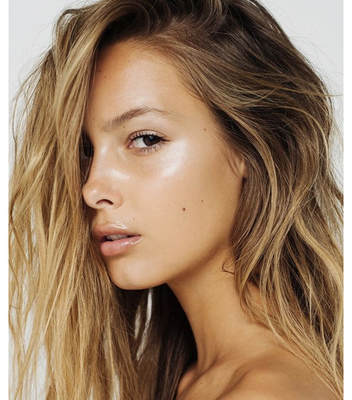 With so many treatment options available, it can be quite confusing. Micro-needling and chemical peels are two different treatment used for different purposes. It's like comparing apples to bread. Not everyone needs micro needling, and not everyone is a suitable candidate for chemical peels. Micro needling (or dermal rolling) was initially used as a clinical treatment for improving and reducing post-acne scarring. It works by breaking down existing scarred tissues with fine needles which stimulate skin healing and rejuvenating process. Over the past few years, it has become a popular modality for reducing the appearance of aging, lines, wrinkles and tightening the skin. The process is called Collagen Induction Therapy (CIT). Micro needling stimulates collagen synthesis, firming skin, minimizing lines, wrinkles, and scarring. Micro needling works at a dermal (deeper) level. Chemical peels, on the other hand, are superficial resurfacing treatments and work by chemically exfoliating the skin. Chemical peels improve the appearance of the skin by enhanced exfoliation. Chemical peels work more on the surface at the epidermal level, to minimise and improve signs of clogging, congestion, acne, open pores, brown spots, pigmentation and fine lines. So when would you choose micro needling vs chemical peels? If you have post acne scarring or are showing signs of premature ageing with sagging of the skin and deeper wrinkles, then I would choose micro needling. If you are showing signs of fine lines, pigmentation, uneven tone, or clogging, congestion, open pores or blackheads, then chemical peels would be more suited to you. Can these treatments be used together? Not in the same sitting, but certainly if we wish to improve the skin appearance at the surface level, we would recommend a course of peels. Following that, if the skin needs further rejuvenation treatments, tightening and reducing the appearance of deeper wrinkles, than a course of micro needling will certainly be beneficial. Peel and micro needling are excellent treatments we use to improve skin where it needs it. But just because a person with damaged skin gains excellent results does not mean a young, healthy skin needs it as a preventative. It's like taking antibiotics when you are not sick. Instead, healthy skin should focus on "preventative" treatments such as facial treatments infusing vitamins, minerals, peptides, anti-oxidants, cleansing, exfoliating, moisturizing and an excellent home skin care routine. Wearing sunscreen every day is perhaps one of the best "preventative" things you can do for a healthy and beautiful skin. And if you have acne, stop picking and squeezing, these are sure ways to scar your skin and then you have a major problem to treat. Thanks to Jana Elston for the insperation behind this post. Are you aware that, living in New Zealand, it is postulated that you cannot make vitamin D from sunlight for six months out of the year? From March through until October, research shows that many people in southern latitudes are deficient in Vitamin D, because there is insufficient sunlight during the winter months to stimulate the production of vitamin D in skin. Although it is termed a vitamin, Vitamin D is actually an essential hormone that helps regulate many processes within the body, along with its synergystic twin, Vitamin A. A deficiency of Vitamin D has been linked to a lowering of the immune system. But what actually is the immune system? The immune system is a collection of different systems designed to protect the body. We are born with our innate immune system, the cells and mechanisms that defend us from infection in a non-specific manner. There are the physical barriers to prevent infection, such as the skin, tears, eyes, respiratory system and the stomach and digestive system; along with the different types of white cells or leukocytes in our blood which fight infection. We also have an acquired immunity which is made up of antibodies produced when the body first comes into contact with a toxin or infection. The next time it meets that infection it has the antibodies to prevent the disease becoming established. We build up most of our acquired immunity in our childhood – which is why we don’t get chicken pox time and time again. As skin therapists, we are particularly interested in the immune system of the skin and so need to look for ingredients that support and strengthen the cells involved in the immune process, such as the Langerhans cells. This is especially important when Vitamin D levels naturally decrease over the winter months as we need to support and maximise the benefits of Vitamin D within our clients’ skin.
How do we do this? Eating a diet rich in fruit and vegetables will ensure we have plenty of the key immune boosting vitamins and minerals such as vitamins A, C, E and the minerals zinc and selenium to help support the Vitamin D in the system. I encourage clients to boost the effect of a healthy diet by adding a topical application of vitamins and antioxidants. This will help ensure the skin’s immune system stays strong and resilient throughout winter. Look for a skin care range that supplies these essential nutrients to the skin, preferably in a dosed, step up system, in order to minimise reactions and achieve optimal results in a weather compromised skin. Vitamin A in particular is needed to support the Langerhans cells and encourage the healthiest skin defense possible. Vitamin C is also important for collagen production and capillary health. Moving from warm indoor environments to the chilly outdoors causes the skin’s capillaries to dilate and contract. The capillary walls eventually lose elasticity and trigger increased redness and sensitivity. This is especially true for clients whose immune systems are already compromised and who present with rosacea, excema or dermatitis type symptoms. Normally, the outer layers of skin form a natural, protective barrier. Studies have shown that those with rosacea, excema and dermatitis have a disrupted barrier that can become even more disrupted when exposed to external aggressors, leading to redness, itching, and increased sensitivity. Look for adaptogens in your products to calm and support. Winter may also be the time to add some extra comfort products to your skincare routine, but make sure that these also deliver nutrients to help the skin. some suggestions and the steps you need to take will depend on your skin. Some may need to do a complete revision of their skin care plan, other may just need to tweak it by adding or swap some skin care product for more winter friendly formulations. Here are some tips: 1 . Switch to a milky or creamy cleanser - if you have oily or combination skin it may love a gel cleanser during warm and humid days, but during the cold and dry season a gentle hydrating and moisturising cleanser may all you skin need to make it feel more comfortable. One way to tell is if your skin is feeling tight or sensitized after cleansing it's time to switch it up. Incorrect cleansing will prevent effective penetration of serums or treatments creams, so make sure your skin is well hydrated.
2. If you are already using a milky cleanser and a good moisturising cream, sometimes all the skin needs is to give it a boost with a hydrating serum. Serums are more powerful than moisturisers and penetrate deeper, so if your skin is deeply dehydrated you may need to get the big guns out. Serums are very useful to help the skin cope with seasonal changes to help the skin adjust. If you are sick, on medication, not sleeping well, smoking, drinking more than 2 cups of tea / coffee a day you may need a serum to help your skin get back into shape. 3. In winter a dry skin suffers even more because dry skins are low in essential fatty acids. This means they tend to lose moisture from their skin through evaporation even faster. We call this impaired barrier. Your skin is literally more porous and not only does it lose moisture faster, irritants can penetrate into the skin and cause sensitivities. To keep your barrier intact and strong, the spaces between the skin cells need to have a good balance of ceramides, cholesterol and essential fatty acids (or omegas 3,6,9). If your skin is very dry and flaking, look for moisturisers rich in omegas 3,6,9. 4. Exfoliate your skin at least once a week. During winter, the skin cellular turnover slows right down to allow the skin to build up a thicker dead cell layer to protect the skin from harsh weather. The trouble is, thicker skin and dead cell build up not only looks sallow, dull and crepey from the surface, making pores look larger, wrinkles deeper and pigmentation darker, but it acts as a barrier to serums and moisturisers. Winter season is the perfect opportunity to undergo a course of peels combined with hydrating facials. Choose AHA or enzyme peels over harsh scrubs which can aggravate already sensitized capillaries. 5. During winter I like to invest in a thirst quenching creamy or gel mask to give the skin and instant glow. I love using masks as they are the one thing you can do that will give you INSTANT results. This is why beauty therapists ALWAYS finish a facial with a mask - for the instant results. A new generation of masks are designed to leave on overnight called sleeping masks. They give life back to the skin overnight and when you wake up in the morning your skin looks like you had a facial. These masks are particularly hydrating and nourishing so terrific to use during winter. 6. I have been seeing so many people with chapped lips. Make sure you exfoliate, moisturise and mask you lips too and for soft kissable lips switch from a matt lipstick to a juicy hydrating formula, lip gloss or a plumping lip balm. 7. Your hands can really suffer in winter because they are exposed to frequent washing with soap and exposed to the environment. Time to invest in a softening and moisturising hand cream. Make sure you massage it well into the cuticles and if going outdoors pop your hand cream on just before you put your gloves on. The warmth of the gloves with help to infuse the cream into the skin and protect your hands. A big thanks to Jana Elston for this post. |
Categories
All
Archives
September 2019
|
Opening Hours:Monday: Closed
Tuesday: 10am - 7pm Wednesday: 10am - 5pm Thursday: 10am - 8pm Friday: 10am - 5pm Saturday: 10am - 2.30pm Sunday: Closed |
Text:Address:168 Kendal Ave
Burnside Christchurch |
Email: |
Pure Indulgence Beauty Therapy operates by appointment only.
,Since 2010 Pure Indulgence has been emphasising self love and care and building a community of like minded people. We pride ourelves on our educated and professional therapists, whilst also ensuring your experience is relaxing. We are an advanced skin, IPL and beauty clinic situated in Burnside, Christchurch. We comibine relaxation with luxurious skincare and modern technology to bring you treatments that work.
©2023 Pure Indulgence Beauty Therapy Nz Ltd. All Rights Reserved
